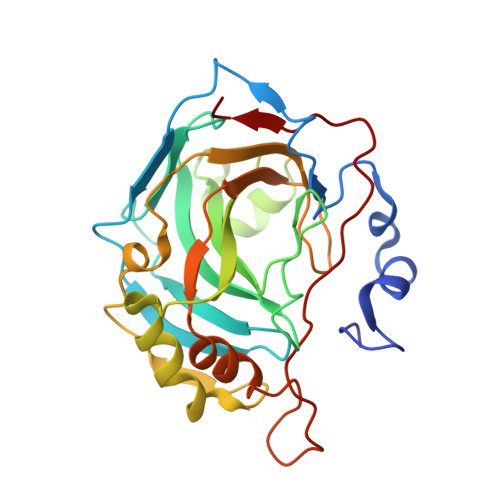B-H⋯ pi and C-H⋯ pi interactions in protein-ligand complexes: carbonic anhydrase II inhibition by carborane sulfonamides.
Fanfrlik, J., Brynda, J., Kugler, M., Lepsik, M., Pospisilova, K., Holub, J., Hnyk, D., Nekvinda, J., Gruner, B., Rezacova, P.(2023) Phys Chem Chem Phys 25: 1728-1733
- PubMed: 36594655
- DOI: https://doi.org/10.1039/d2cp04673c
- Primary Citation of Related Structures:
8AA6, 8AAE - PubMed Abstract:
Among non-covalent interactions, B-H⋯π and C-H⋯π hydrogen bonding is rather weak and less studied. Nevertheless, since both can affect the energetics of protein-ligand binding, their understanding is an important prerequisite for reliable predictions of affinities. Through a combination of high-resolution X-ray crystallography and quantum-chemical calculations on carbonic anhydrase II/carborane-based inhibitor systems, this paper provides the first example of B-H⋯π hydrogen bonding in a protein-ligand complex. It shows that the B-H⋯π interaction is stabilized by dispersion, followed by electrostatics. Furthermore, it demonstrates that the similar C-H⋯π interaction is twice as strong, with a slightly smaller contribution of dispersion and a slightly higher contribution of electrostatics. Such a detailed insight will facilitate the rational design of future protein ligands, controlling these types of non-covalent interactions.
Organizational Affiliation:
Institute of Organic Chemistry and Biochemistry of the Czech Academy of Sciences, Flemingovo nam. 2, 166 10, Prague 6, Czech Republic. fanfrlik@uochb.cas.cz.




















